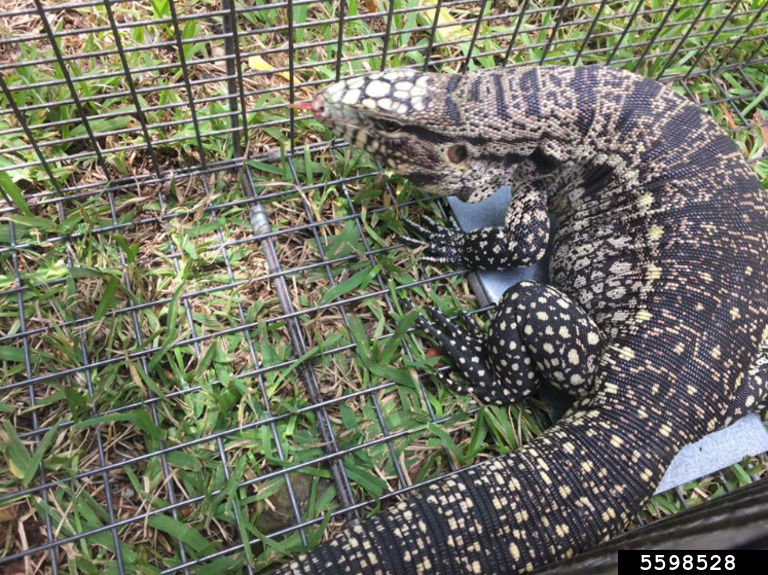Invasive Species
- Kaitlyn Scheffler
- Aug 1
- 4 min read
This week, we are going to share plants and animals that don’t belong in Georgia! While we want to talk about this issue, it is important to note that many of these plants and animals may look similar to native plants and animals, and we always recommend talking to professionals at the Georgia Department of Natural Resources (DNR) about any wildlife before taking action yourself.
What is an invasive species?
Non-native species that are of concern due to overuse of resources or outcompeting native plants and animals are called invasive species. There are three levels of invasive species listed by the Georgia Department of Natural Resources (Priority 1-3). Priority 1 Species are doing the most amount of damage and have plans in place to help eradicate or prevent them from remaining in Georgia habitats. Priority 3 species are those that are dealt with only in unusual circumstances, either because they represent minor threats or are essentially naturalized and impossible to control with current methods.
What are some of the Invasive Species in Georgia?
There are over 83 invasive or potentially invasive plant species, 111 animal species, and 30 disease-causing organisms.
Tree of heaven (Ailanthus altissima) - This plant is a highly invasive tree species native to China that has spread aggressively throughout North America. It is considered invasive due to its rapid growth, prolific seed production, and ability to outcompete native plants, as well as its allelopathic properties that inhibit the growth of other plants. As early as 1886, the City of Atlanta, Georgia adopted an ordinance against the Ailantus tree. The tree releases chemicals that inhibit the growth of other plants, further contributing to its dominance in an area. Tree of Heaven outcompetes native trees and plants for resources, disrupting natural ecosystems. Its extensive root system can damage sewers, foundations, and other structures. Spotted Lanternflies, another invasive species (SEE BELOW), often use the Tree of Heaven as their homes.

Goldfish - There is already a lot of misconceptions about goldfish care in captivity. People still don’t have the right idea when it comes to caring for goldfish, and many end up in small bowls or won as prizes at fairs. This means that when the reality of owning a goldfish hits, people often release or flush these fish. This leads to huge invasive species issues.
Why? Because regular goldfish can actually grow up to the size of a FOOTBALL and can live 30-40 years. When we keep them as pets, we often don’t realize this and they either have stunted growth due to the size of our aquariums, they become a chore to take care of because they outgrow the spaces we have set up for them, or they live longer than expected. When they end up in our native waterways, they cause real harm to the ecosystem.
Their feeding preferences consist of fish eggs, fish larvae, and aquatic plants, and this wide array of subsistence magnifies their impact on ecosystem health and biodiversity. These fish stir up the sediment when they feed, causing particles to float through the water and increase its turbidity.
Cloudier water limits the amount of sunlight that can reach the aquatic plants, reducing their growth and survival. This not only reduces the available oxygen in the water, but also directly contributes to algae blooms, which can ultimately impact food webs and kill aquatic wildlife.
These fish, when kept properly, can make fine pets, but please don’t release them or flush them!

Lantern Fly - The Lantern Fly is a bug that is native to China and parts of Vietnam. These little critters are actually quite striking with their red bodies and black spots, which become ornamental red and black spotted wings as adults. It’s preferred host is the Tree of Heaven, which is also invasive in the U.S, but they will live just about anywhere. These critters are a huge problem in the Agriculture industry, destroying crops and causing somewhere in the ballpark of 300 million dollars worth of damage to crops and forests annually since 2014. They eat the sap of the trees in large numbers which damages them, they also secrete a substance colloquially called “honeydew” that often creates a mold problem for trees. The honeydew excreted by these flies can coat surfaces, including decks, patio furniture, and cars, making them sticky and unsightly and bringing more mold to your home.

Tegu - The Tegu is a lizard that is native to South America. This invasive species can be over four feet long and can live up to 20 years. Originally found in the pet trade, people who no longer wanted to care for their pets released them into Georgia, or they escaped, and started breeding. These lizards are destructive to native ecosystems. They feed on a variety of foodstuffs but prefer eggs. With their voracious appetites, they are targeting native birds, alligators, and turtle species, some of which are already vulnerable, like the Gopher Tortoise.

What Can I Do About It?
Prevention: How do we prevent invasive species?
Don’t release non-native animals into our ecosystems. Even “just a goldfish” can cause a huge problem down the line.
Check your plant orders for unwanted and potentially invasive hitchhikers.
Buy wood where you plan to burn it.
Wash your car before leaving a known area with invasive species.
Stay on designated paths.
Empty your boat of all water, clean it, and allow it to completely dry before entering any new bodies of water.

Reporting: If you find an invasive species, REPORT IT! Especially if it’s a Priority One Species, Georgia’s DNR will want to hear about it. You can find reporting information below.
GENERAL REPORTS https://www.pesttracker.org/state.php?code=GA
Lantern Fly and Tegu Reporting:
Aquatic Species Reporting: https://survey123.arcgis.com/share/27095654f96e4698b4d1a3b5723a46e5
Removal: Please follow any directions from DNR on what to do once you have reported the invasive species!
Want to read more? CLICK HERE to learn more about the invasive species here in Georgia!




Comments